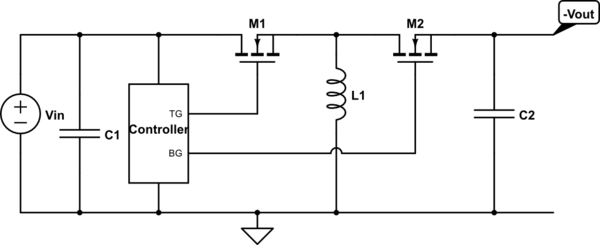Getting all the way down to 1 V is going to be difficult, but there are some converter topologies that can do what you want. You might just have to cut off at 1.5 or 2 V instead of 1 V.
First and most basic is the conventional buck-boost converter, like so:

simulate this circuit – Schematic created using CircuitLab
The downside to this one is that Vout is restricted to being negative, if the input is positive. If the input is negative, you can move things around a bit and get a positive output. But the input and output have to be opposite polarity. If that's not a problem for you, this will work. If that is a problem for you, there are two other topologies that come to mind.
The SEPIC is a relatively complex topology, especially to analyze, but controllers for it are readily available from major manufacturers. (However, it may be difficult to find synchronous SEPIC controllers.) It can output voltages higher, lower, or the same as its input. Most any buck converter controller can be used for a buck-boost converter, if some level shifters are used.

simulate this circuit
As synchronous SEPIC controllers are so rare, I've shown a non-synchronous one here. A synchronous one would replace D1 with a second MOSFET.
If you want the higher efficiency of a synchronous converter, or you just don't want to deal with the multiple inductors or difficulty of analyzing a SEPIC, you could use a four-switch buck-boost. This is essentially just a standard buck converter and a standard boost converter sharing the same inductor:

simulate this circuit
When the input is significantly less than the desired output, M1 is held on, M2 is held off, and M3 and M4 switch like a normal boost converter. When the input is significantly greater than the desired output, M4 is held on, M3 is held off, and M1 and M2 switch like a normal buck converter. The transition between the two modes, when the input is approximately equal to the desired output, sees all four switches actively switching.
This type of converter requires more active switches than the other types, and the controller may be more expensive, but it's a fairly straightforward way of doing what you want.



